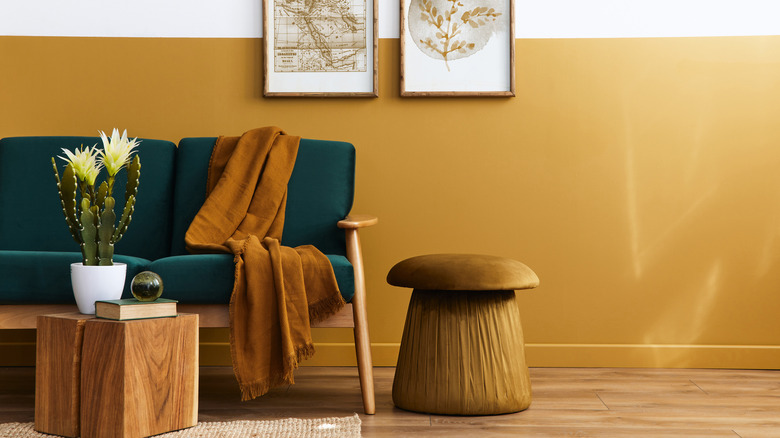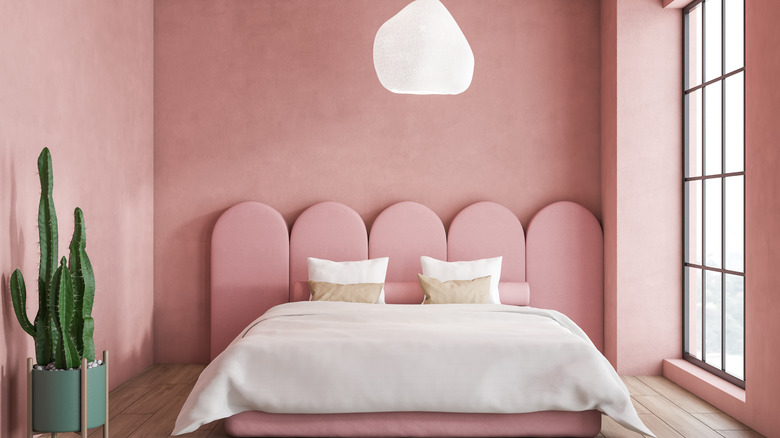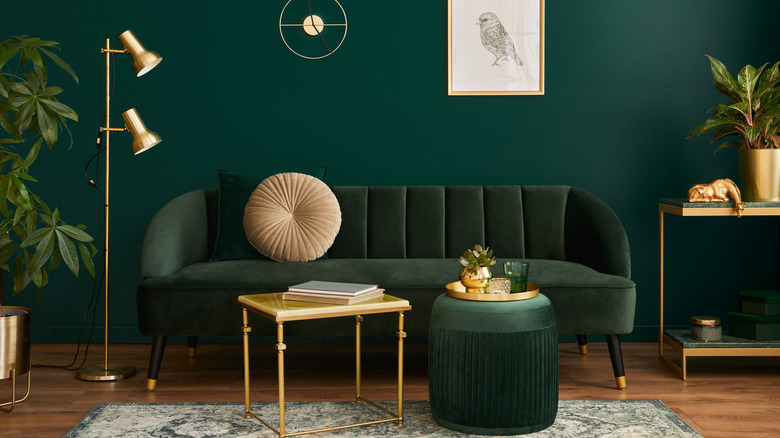How To Use The Timeless 60-30-10 Color Rule When Decorating Your Home
Decorating a home can be intimidating — everyone wants their house to be a place that is soothing, relaxing, but inspiring at the same time. While you're determining how to style your space, you've undoubtedly come across hundreds of professional images in blogs and magazines and probably asked yourself what makes them look so good.
One of the best ways to ensure a cohesive design style is by following the classic 60-30-10 rule. Essentially, your main color or base should be about 60% of the room, your secondary accent 30%, and your tertiary color around 10%, according to Sara Lynn Brennan Interiors. You can use this interior design rule in any space, whether you're into maximalism or minimalism.
Knowing how to actually apply this rule to your own home can be a daunting task, especially when it comes to picking out the right colors. While you can throw figurative darts at paint swatches, there are actually some key rules that make this process orderly and accessible. We'll walk you through picking out the right palette so your house will look good enough for a feature in a magazine.
Picking the right color scheme
Before you head for the paint aisle, decide on exactly what sort of color scheme you want to work with. A color scheme differs from the actual paint palette in that it is about how you plan to arrange the colors. There are many traditional color schemes in the design world. Still, for the purposes of the 60-30-10 rule, you only need to know about four: complementary, monochromatic, analogous, and triadic. But don't panic — you can use a color wheel like Canva's dynamic scheme to help you learn and identify these schemes.
Complementary color schemes use shades that lay on opposite sides of the color wheel. When paired together, they create the highest possible contrast for each color. For example, monochromatic schemes use a single base color and then offer one or two different tones and tints of the base to create a balanced, soothing palette. Analogous schemes draw from colors that reside beside each other on the color wheel, while triadic schemes use three colors evenly spaced apart on the color wheel. Once you've decided the type of scheme you'd like to use, you are ready to move on to palettes.
Picking the best palette for the 60-30-10 rule
With a basic understanding of color theory, you'll be ready to make a harmonious, balanced choice when picking out the colors for your place. While every home is different, and your design is unique to you, here are a couple of tips. First, when selecting your three color choices, ensure at least one of them is neutral. That doesn't mean it has to be white or beige — neutrals can come in blacks, metallics, wood tones, and so on. From there, use either a complementary or monochromatic scheme. However, if you're a true maximalist, you may opt for analogous or triadic schemes.
Finally, when you've decided on your three main colors, you need to determine how you will use each one. There's no right or wrong answer here, but a good place to start, says Homes & Gardens, is with the walls. Walls take up the majority of the visual space in any room, so this is likely where you'll show off your main color. Choose the deepest or brightest hue for a bold look, or go neutral and let the accents add character.


